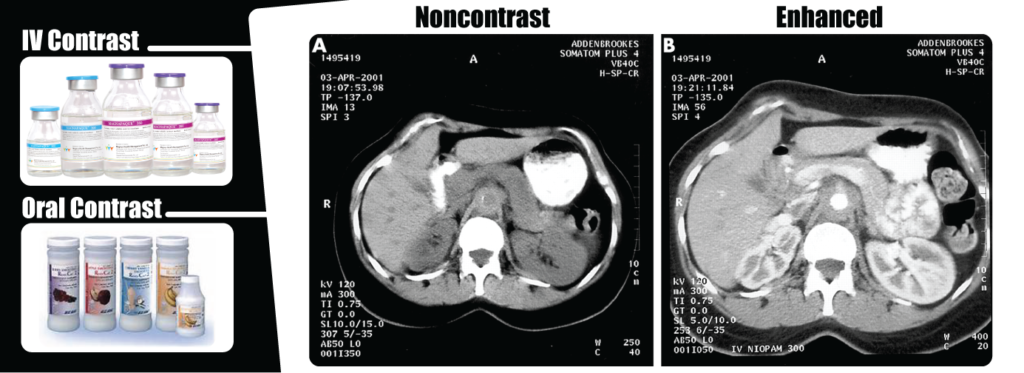Contrast in CT scans is a dye that is administered to a patient when specific areas in the body are needed to be seen in detail. The dye can be injected via IV, consumed orally, (rarely) inhalation, and even given as an enema. The dye is composed of the mineral barium sulfate (BaSO4) or gastrografin. It is a natural metallic element but is chemically similar to calcium. When this dye is administered, it shows up as highlights the area containing it on the image. This allows for better definition of the target area structures.

Intravenous Contrast: This contrast is injected directly into the blood stream via a small needle or IV line. This dye highlights blood vessels, and tissue structure in the brain, spine, kidneys, and liver. This contrast looks like water and is given in doses ranging from 75cc to 150cc.
Oral Contrast: This contrast is introduced to the body via drinking. The barium or gastrografin is mixed into a sweetened and flavored drink. This allows for the abdomen, pelvis, and GI tract to be clearly seen. The consistency is similar to a milkshake and 1000cc to 1500cc must be consumed. The more consumption the clearer the contrast will show up.
Rectal Contrast: This contrast is delivered via enema. This delivery technique is used to highlight the large intestine, bladder, and other organs located within the pelvis.
Gas Contrast: This contrast is inhaled. It is only offered in very rare cases and is offered at only a few facilities worldwide. This technique is used to highlight the lungs, sinus cavities, and the brain.
